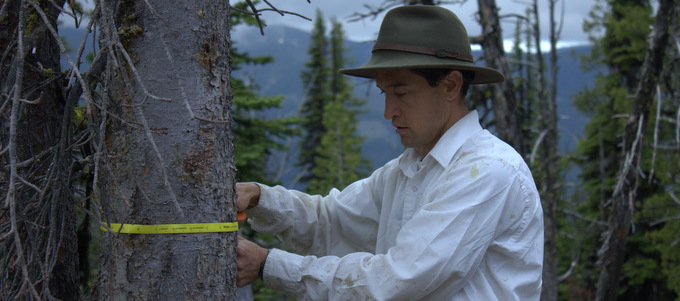Whitebark pine is a masting species of high elevation forest ecosystems in western North America. Whitebark pine is a foundation species in high elevation forests because it facilitates stand development by ameliorating harsh timberline conditions and provides an important food source for many wildlife species through its nutritious seeds. The functioning of whitebark pine ecosystems is threatened by high tree mortality caused by the combined effects of an invasive pathogen, white pine blister rust, increasingly virulent outbreaks of the native mountain pine beetle, and a deteriorating climate which includes higher temperatures and more frequent drought. Using data I’ve collected throughout western Montana, I’ve shown that whitebark pine is pollen limited and that this contributes to enhancing seed production in mast years and synchronizing reproduction at the population level. Since pollen limitation is likely to increase as the density of whitebark pine declines, masting patterns may be disrupted, with effects rippling throughout the ecosystem. To understand the factors that contribute to the death of trees and understand the potential for the regeneration of stands affected by mountain pine beetle, I am using long term records of cone production (counts of cone scars on branches) and tree growth (increment cores), as well as a suite of tree and stand health metrics to model mortality risk of individual trees. Initial results suggest that growth rates decline several years before mortality from mountain pine beetle attack, but that cone production does not. My data on surviving trees from MPB-affected stands will shed light on the regeneration potential of these stands. In particular, has cone production become more pollen limited as the density of reproductive trees has declined? Are surviving trees overall more vigorous, or did they have lower growth and reproductive rates than trees that died, potentially indicating a trade-off between defense and growth and/or reproduction?
Collaborators
Elizabeth Crone, Tufts University, Department of Biology
Eliot McIntire, Natural Resources Canada, Pacific Forestry Centre
